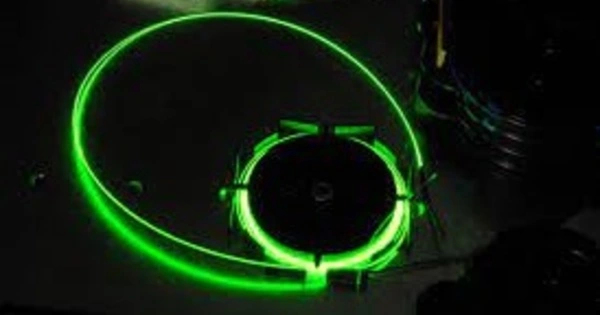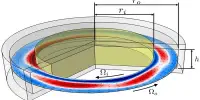While quantum computers offer many novel possibilities, they also pose a threat to internet security because these supercomputers render common encryption methods vulnerable. Researchers have created a new, tap-proof communication network based on so-called quantum key distribution.
The new system is used to exchange symmetric keys between parties in order to encrypt messages so that they cannot be read by third parties. The researchers, led by physics professor Thomas Walther, succeeded in operating a quantum network that is scalable in terms of the number of users while remaining robust without the need for trusted nodes in collaboration with Deutsche Telekom. In the future, such systems could protect critical infrastructure from the growing threat of cyberattacks. In addition, tap-proof connections could be installed between different government sites in larger cities.
The new system is used to exchange symmetric keys between parties in order to encrypt messages so that they cannot be read by third parties. In the future, such systems could protect critical infrastructure from the growing danger of cyberattacks. In addition, tap-proof connections could be installed between different government sites in larger cities.
Professor Thomas Walther
The system developed by the Darmstadt researchers enables the so-called quantum key exchange, providing several parties in a star-shaped network with a common random number. Individual light quanta, so-called photons, are distributed to users in the communication network in order to calculate the random number and thus the digital key. Due to quantum physical effects, these keys are particularly secure. In this way, communication is particularly highly protected, and existing eavesdropping attacks can be detected.

Until now, such quantum key methods have been technically complex and susceptible to outside influences. The Darmstadt group’s system from the Collaborative Research Center CROSSING is based on a unique protocol. The system distributes photons from a central source to all network users and secures the quantum keys using the effect of so-called quantum entanglement. This quantum-physical effect creates correlations between two light particles that can be seen even when they are far apart. A property of the light particle from a pair can be used to predict the property of the partner particle.
Polarization is frequently used as a property, but it is frequently disturbed in transmission glass fibers due to environmental influences such as vibrations or small temperature changes. The Darmstadt system, on the other hand, employs a protocol in which quantum information is encoded in the phase and arrival time of photons, making it particularly resistant to such disturbances. Using this robust protocol, the group was able to provide quantum keys to a network of users for the first time.
In a field test conducted in collaboration with Deutsche Telekom Technik GmbH, the transmission’s high stability and scalability were successfully demonstrated. As a next step, the researchers at TU Darmstadt are planning to connect other buildings in the city to their system.
















